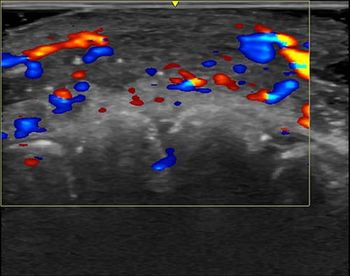
Philips builds on 1.5T to evolve 3T platform
Adoption hinges on appeal to referrersMR techniques typically migrate from higher to lower field systems. But Philips Medical Systems went the other way in developing whole-body imaging on its Intera 3.0T."We built the 3T on a
Adoption hinges on appeal to referrers
MR techniques typically migrate from higher to lower field systems. But Philips Medical Systems went the other way in developing whole-body imaging on its Intera 3.0T.
"We built the 3T on a synergistic platform with the 1.5T product," said Bob Kaftan, vice president of Philips MR. "This has accelerated our ability to offer 3T."
The Intera 3.0T is built on the same platform as the 1.5T, he said. Techniques proven at 1.5T are implemented on the 3T system Philips showcased in mid-July at the annual meeting of the International Society for Magnetic Resonance in Medicine.
The higher field delivers better signal to noise throughout the body than other Philips MR products. Coils optimize whole-body applications, as well as those pertaining to the head, heart, and spine. General-purpose, joint and pediatric, and cardiac coils include phased-array and SENSE (sensitivity encoding) technology to support parallel imaging.
"Philips broke barriers in cardiac imaging at 1.5T," said Hans Kleine Schaars, business segment director for Philips MR Radiology. "You can expect the same leadership in cardiac MR in the world of 3T."
Among the innovations introduced by Philips at 1.5T is the vector cardiogram, which has been adapted to record a reliable ECG signal in a 3T magnet, Schaars said. This information is essential to capturing high-quality MR images of the heart.
Cardiac imaging is among the most challenging applications but certainly not the only one of interest to potential buyers of 3T systems, Kaftan said. Philips is positioning the Intera 3.0T to appeal to referring physicians as well. High on the list are neurologists and neurosurgeons.
"They will want exams done at 3T when they see what can be done at that field strength," he said.
Competition will drive the adoption of 3T systems, according to Kaftan, as providers of MR services seek to outdo each other. The small footprint of the Intera 3.0T and, consequently, the patient-friendly environment it creates should give Philips an edge over competitors with larger systems.
Newsletter
Stay at the forefront of radiology with the Diagnostic Imaging newsletter, delivering the latest news, clinical insights, and imaging advancements for today’s radiologists.




























